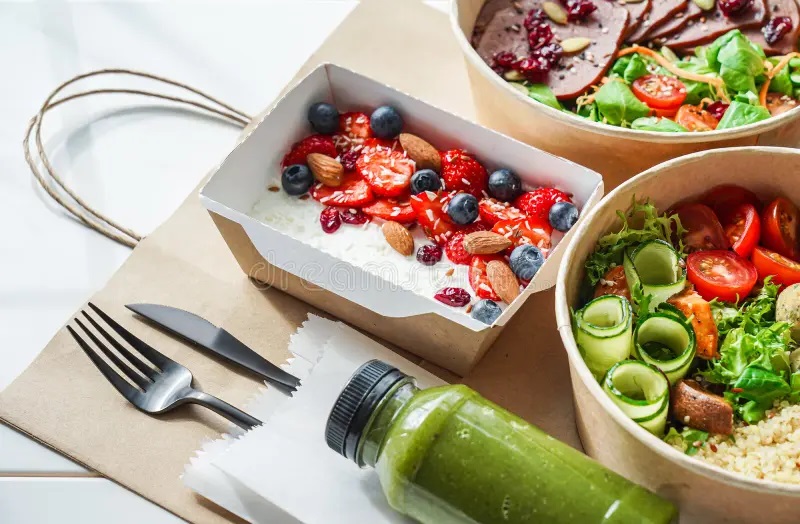Whether you’re looking for culinary inspiration, new foods to add to your recipe repertoire or just want to make weeknight dinners easier, meal delivery services can be worth the expense. The GH Institute’s food and nutrition experts tested a variety of services from traditional meal kits to fully prepared, ready-to-eat options.
What is a meal delivery service?
A meal delivery service is a company that sends pre-portioned ingredients or fully cooked meals directly to your home in insulated and refrigerated packaging. They operate on a subscription business model where you can choose from a menu of options and have them delivered to you each week. Many meal delivery services also work with local farms to source their ingredients and offer diet-specific options for people following vegan, vegetarian or keto diets. You can even find dietitian-designed meals for those looking to lose weight.
Meal delivery services can be found online and in-app and are available at a wide range of price points. Most meal delivery companies offer a free trial or first-time customer discount to entice you to give them a try. Those who continue to use the service will be charged on a weekly or monthly basis, depending on the subscription plan you chose. You can pause or change your subscription at any time, though there is usually a cutoff date for changes four to six days before your next scheduled delivery.
There are three basic types of food delivery services. Third-party apps like Grubhub and Doordash allow you to order take-out from a large selection of restaurants and fast-food establishments in your area and have it delivered to you by the restaurant or a partner driver. Grocery delivery services deliver groceries, fresh produce and other foods to your home, either directly from stores or from their own in-house brand of products.
How does it work?
You choose the meals you want from a menu released each week and select your dietary preferences, if applicable. The service cooks the meals, packs them and delivers them to your door or pick-up location. You can also customize your order by adjusting the number of servings per meal or changing dietary restrictions.
Most meal delivery services are based on subscription models, where you pay for a weekly or monthly fee and can cancel with no penalties (if there are any). Some offer the option to choose a la cart meals if you aren’t ready for a subscription yet. SELF’s research finds that most meal delivery companies allow subscribers to pause, change or skip deliveries, though there are typically cutoff dates for these modifications that won’t affect your next scheduled delivery.
Food quality and customer service are two of the most important aspects of a meal delivery company. A poor food quality or hygiene issue can turn off potential customers. Companies can improve their quality by providing the right training to their staff, using route optimization software to ensure that each driver has a designated route and optimizing storage space for freshness.
Another factor to consider is if the meal delivery service you are considering offers options for special diets, like plant-based foods or keto and Paleo meals. Many meal delivery services can accommodate a range of dietary needs, but some have more limited options and may process their foods in facilities that don’t uphold strict allergen standards.
What are the benefits?
Following a healthy diet is an important part of wellness. But it can be challenging when juggling busy schedules and the time needed to shop, cook, and clean up after meals. Using a meal delivery service is one way to stay on track with your health goals without sacrificing your valuable time.
Many meal delivery services offer a variety of nutritious options that can fit different diets and health concerns. Some even offer a range of recipes and meals created by physicians and registered dietitians. Many meals are also pre-portioned, which can help maintain a healthy weight or lose excess weight. In addition, most of these meals are prepared with nutrient-rich ingredients, so you can be sure you’re getting the vitamins and minerals you need.
Another benefit of a meal delivery service is that it can save you money on restaurant bills and grocery shopping costs. Plus, it can be a great way to learn new cooking skills and expand your culinary palate. Many meal kit and prepared meal delivery services include detailed recipe cards so you can replicate the meals at home. Lastly, using a meal delivery service can help you improve your portion control, which is crucial for maintaining a healthy weight and controlling diabetes or high blood pressure. Meals delivered to your door are usually designed to be eaten within a few days and will keep in the fridge for up to four days.
What are the drawbacks?
In some cases, people who use food delivery services might become socially isolated. This can be due to several reasons, like the fact that they no longer go out or meet with friends or relatives because of their health problems.
Another drawback is that some meals are very high in sodium. This can be an issue for people with high blood pressure and other health issues.
Finally, using a meal delivery service might be expensive. This can be a problem for people on a budget or for those who are looking for cheap food options.
Meal delivery services offer a wide variety of food options, which can be helpful for people who are picky eaters or have allergies. However, it’s important to remember that these meals are not as healthy as those served at a restaurant.
Meal delivery services can be a great option for busy people who don’t have time to cook. They can also save money by eliminating the need to buy groceries and eat out. Plus, many meal kits are portion-controlled, which can help reduce food waste.
